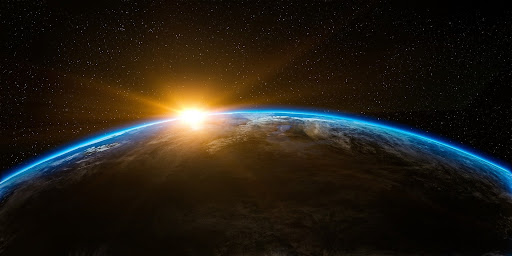
Mercury is the closest planet to the Sun. Mercury was named after the messenger of the Roman Gods. Mercury is also known as “quicksilver,” both nicknames are derived from the swift and unusual orbit around the sun. According to NASA, Craters and features on Mercury are named after deceased artists, musicians, or authors, including children’s author Dr. Seuss and dance pioneer Alvin Ailey.
How Fast is Mercury?
Mercury orbits the Sun every 88 Earth days. However, Mercury itself rotates slowly on its axis. Mercury spins nearly perfectly upright and so it does not experience seasons as many other planets do. On Mercury, one full day-night cycle takes over two Mercury years, or roughly 176 Earth days. The non-circular orbit leads Mercury between 47 million and 69.8 million kilometers from the sun. The egg-shaped orbit creates conditions during the sunrise which makes the sun rise briefly, set, and rise again to start the very long day. The same thing happens in reverse at sunset. Sunlight takes 3.2 minutes to travel from the Sun to Mercury.
What is Mercury made of?
Mercury is a rocky planet with a huge iron core. The core takes up 75% of the planet’s diameter. Iron makes up about 70% of Mercury’s total weight making Mercury the most iron-rich planet in the Solar System. On top of the core is a rocky shell which is about 550 kilometers thick. The planet has been shaped by crater-creating impact, lava flow, and tectonic plate activity. Mercury is only about one-third the size of the Earth. Scientists theorize that Mercury’s magnetic field is due to its iron core or solar winds. Even though Mercury is closest to the Sun, the average temperature on its surface is much less than Venus. (Find out how hot Venus can get in our next installment of Five Minute Planetarium: Venus) Mercury doesn’t get as hot because the atmosphere is very thin and is composed of helium and sodium. The side facing the sun reaches 430 deg C, the other side can get as cold as -180 deg C. Mercury may have ice at its north and south poles inside deep craters, but only in regions in permanent shadows where it could be cold enough to ice despite the high temperatures on other parts of the planet.

Potential for Life
Instead of an atmosphere, Mercury possesses a thin exosphere made up of particles that chip off the surface by the solar wind and striking meteoroids. Mercury’s exosphere is composed mostly of oxygen, sodium, hydrogen, helium, and potassium. The particles would not be breathable; the atmosphere would likely cause abrasions all over the skin… not to mention the heat of mercury causing major burns. Though Mercury’s magnetic field at the surface has just 1% the strength of Earth’s, it interacts with the magnetic field of the solar wind to sometimes create intense magnetic tornadoes that funnel the fast, hot solar wind plasma down to the surface of the planet… imagine a flaming hot tornado. All of this means, Mercury’s environment is not conducive to life as we know it. The temperatures and solar radiation that characterize this planet are too extreme for organisms to adapt.
Mercury may not be the biggest or hottest planet, but it is the fastest. Mercury will continue to orbit until the sun begins to die and swells, then the small planet will be sucked into the fire ball. That won’t happen for millions of years. For now, the quicksilver planet will fly above our heads and in our solar system… the majestic Milky Way.
Written by: Erinn Malloy
